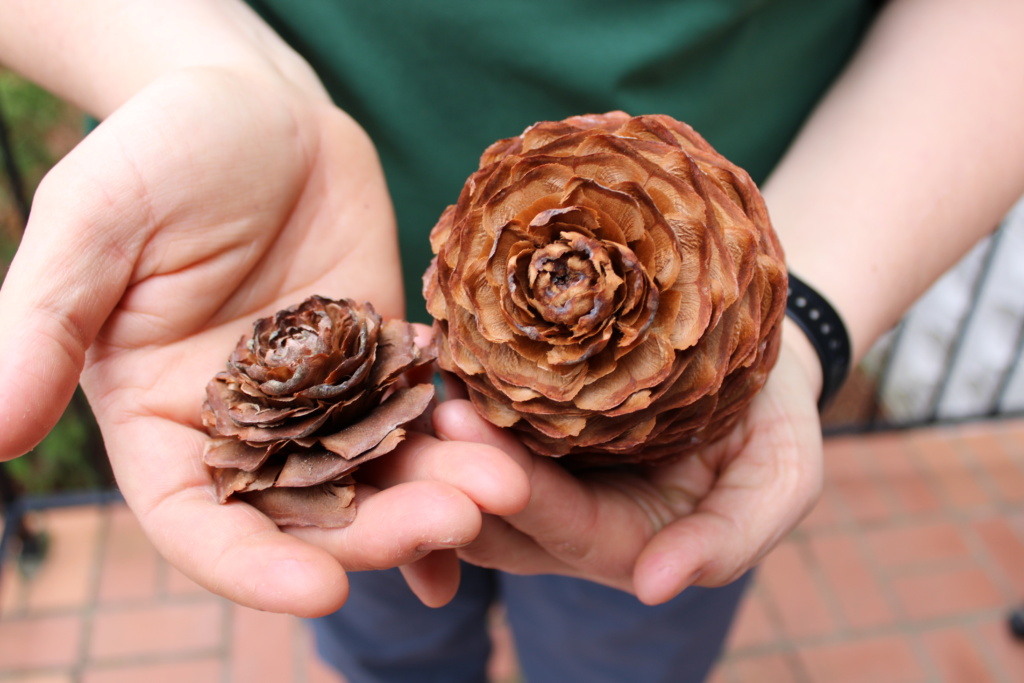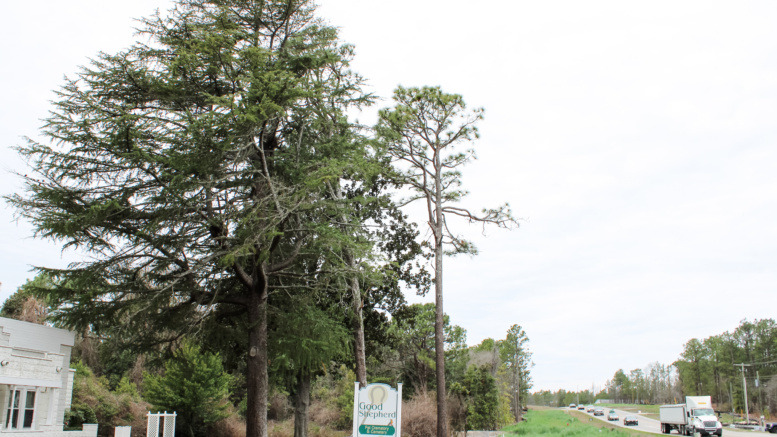By Maggie Beamguard
Insider Editor
It was last spring when work crews popped up along N.C. 211 in West End and Seven Lakes with backhoes and bulldozers.
Landmarks like Nardo’s Barber Shop and the Log Cabin were razed to the ground or cleared out. Hundreds of pine trees and one beloved Willow oak at the corner of the Seven Lakes Business Center met an inelegant end in burn piles.
Businesses along the N.C. 211 corridor have, for years, kept a wary eye out for indications that the long-planned road widening project would imminently devour their frontage.
The folks at Good Shepherd Pet Crematory and Cemetery, a sister company of Boles Funeral Homes, were no exception. They knew early on that their historic building and property would be spared, based on the Department of Transportation schematics. Markers placed along the new boundary gave them hope that much of their front yard, including one very special tree, would remain unscathed. Once the heavy equipment started showing up, they held their breath.
Located front and center of their property, an Atlas cedar — one of their most precious assets — was spared the ax.
One could be forgiven for thinking it was a pine tree when speeding past on the way to town. It has a tall, central trunk and thin, open branches covered in evergreen foliage and brown cones. It is native to mountainous regions of Morocco and Algeria.
When you slow down a little on the busy highway to get a good look, the tree does appear a little out of place, otherworldly. Its canopy is lower and wider than the tall pines of this area, more like a white pine. It looks a little windswept. The cedar’s trunk is thick, 10 feet at least.
The cones are egg-shaped, dense and heavy like a baseball. Unlike pine trees, which drop their light and airy cones in their entirety, the Atlas cedar cone sheds most of its scales before dropping, leaving a charming, rustic “rose” to collect. Full cones can only be gathered directly from the tree or from fallen branches.

In native conditions, the slow-growing trees have been known to live up to 900 years and grow upwards of 120 feet, or 10-12 stories high.
The stand-out tree was featured by Scott Mason in May of 2021 on WRAL’s Tar Heel Traveler. April Yow, director of Good Shepherd, said that she isn’t sure how the tree came to be here. But she has a theory.
“The more I learned about this tree, I started seeing these trees in other locations across the county,” said Yow, who grew up in Cameron. “Most of the time when I see them, they are close to a road, a traveling area. You don’t find them in a forest. In all my hiking through the woods I’ve never seen another one.”
There were three across the street that did not survive the clearing. But she has seen them down N.C. 73, in front of the Moore Coalition Shops on West Pennsylvania and on May Street in Southern Pines.
“Usually it’s wherever there’s a main road,” she said.
Yow believes the cedar was brought here by a settler. Good Shepherd’s property abuts the railroad tracks, which were put down in the late 1800’s or early 1900’s. Before the tracks, Yow said this area was along a buffalo trail. She suspects this was a popular trade route.
The unique house where Good Shepherd is located at 5198 N.C. 211 in West End is said to have been built by Irma Cheek Smith, who worked for the Norfolk Southern Railroad. According to family lore, inspired after a trip to Italy by the facades and architecture, she molded every brick of the home herself. Boles purchased the property from her family in 1997.
Based on some family pictures depicting the tree, Yow estimates the cedar is about 200 years old.
The property has yielded hard evidence of its mysterious past. When preparing the ground for burials, staff have turned up horseshoes including ice cleats for horses, hammers and nails, milkglass and what are believed to be parts to a Ford Model T.
Landscapers frequently uncover old statues believed to have belonged to Smith as part of an elaborate Italian garden. In addition to the Atlas cedar, the property features southern magnolias, tulip magnolias, hemlocks, cherry trees and camellias.
Yow enjoys exploring the grounds and is grateful the front view will remain intact. “Luckily the road didn’t take the cedar, so it didn’t break my heart,” she said.
In a location that experiences change and decay day by day, the cedar will, for now, stand tall, its wide branches abiding over the resting place of creatures great and small.
Contact Maggie Beamguard at maggie@thepilot.com.







